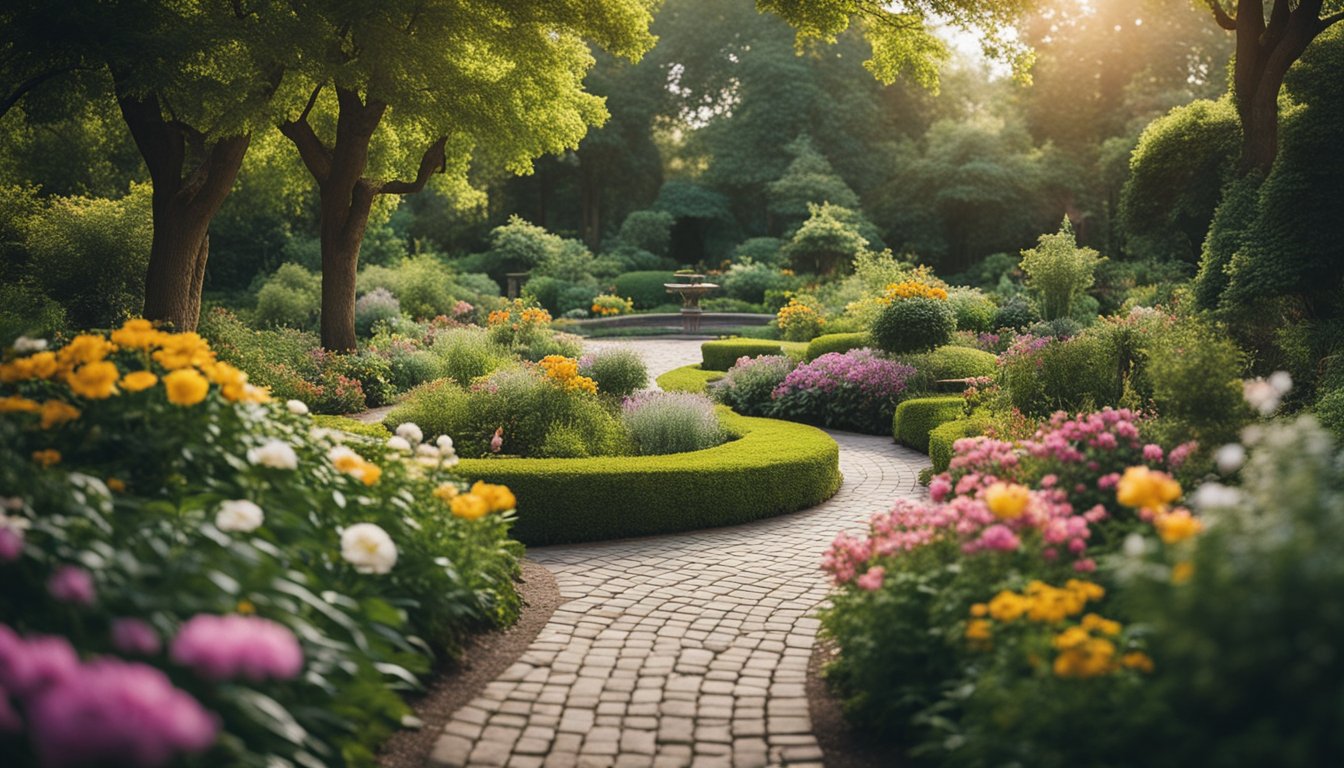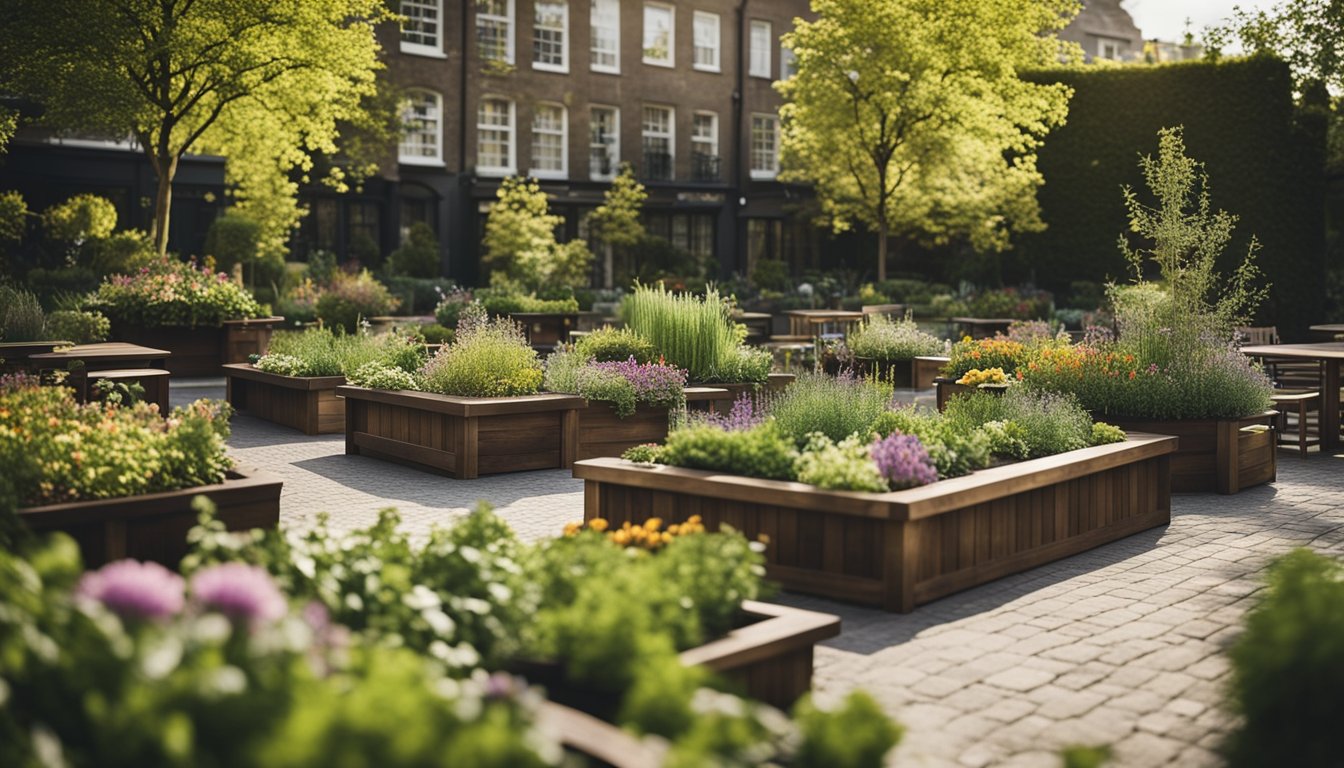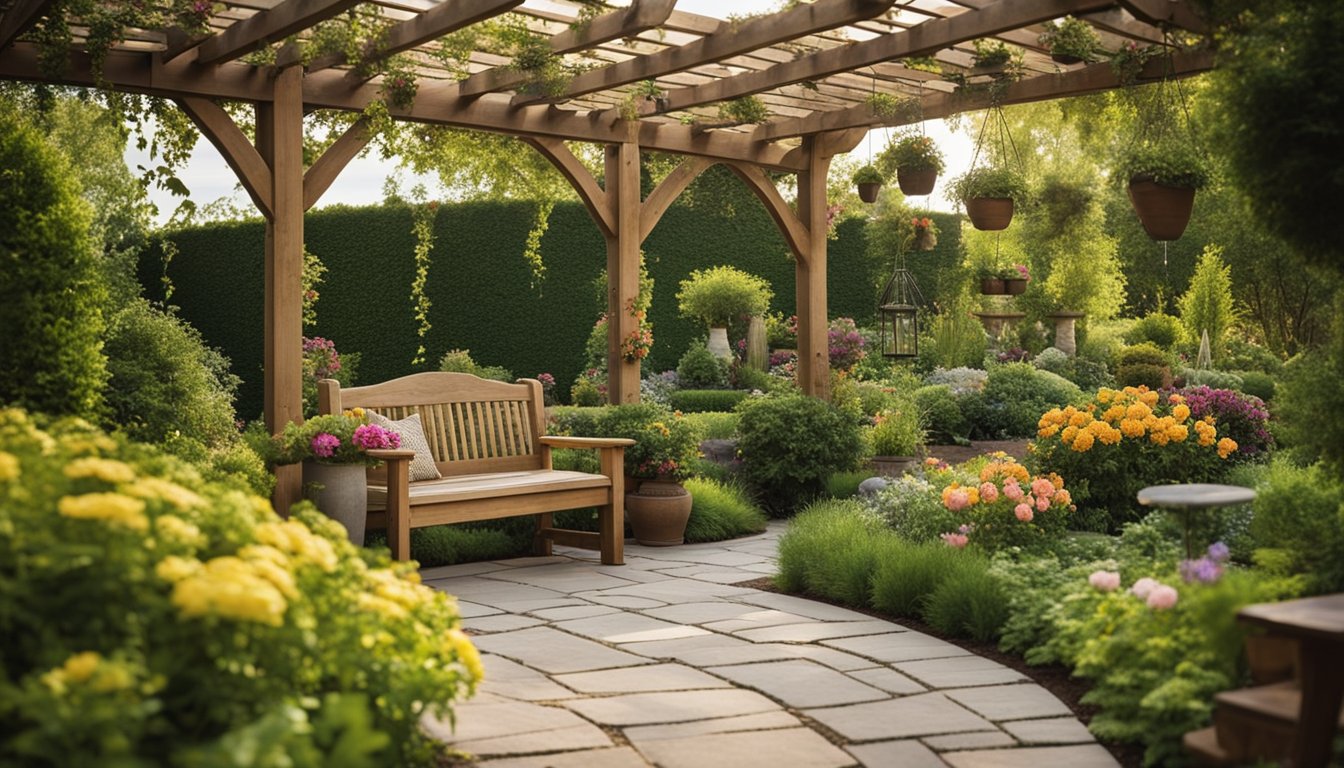Late updated: 20 Feb 2025 11:02
Written by: James Whitaker
Exploring Alternative Ways To Enjoy Your Garden: Innovative Ideas for Every Season
Exploring diverse methods to enjoy our garden not only rejuvenates the space but also enhances our connection with nature. Whether we lack traditional gardening space or seek to innovate, there are various ingenious approaches to transform our green havens. One of the most effective solutions is the creation of container gardens, which allow us to cultivate an array of plants effectively, regardless of space limitations.

We can further enhance our garden's appeal by integrating low-maintenance plants such as micro herbs and hardy perennial varieties. These not only add vibrant colours but also reduce the effort required to maintain the garden. By focusing on practical and sustainable gardening methods, we bring life and biodiversity while keeping the workload manageable.
The aesthetic charm of our garden can be elevated through cost-effective enhancements. Small changes, like painting garden fences with lighter colours, can create a sense of spaciousness and openness. Through these creative and resourceful strategies, our garden evolves into a captivating refuge.
Key Takeaways
- Alternative methods can transform any garden space.
- Incorporating low-maintenance plants simplifies gardening.
- Small aesthetic changes have a big impact.
Creating a Diverse Garden with Alternative Techniques

In exploring innovative gardening methods, we focus on practical ways to enhance diversity through vertical and container gardening, creative use of raised beds, and advanced systems like hydroponics and aquaponics. These approaches allow us to make the most of available space and resources while fostering a rich, thriving garden environment.
Vertical and Container Gardening Essentials
Vertical and container gardening maximise limited outdoor spaces and boost biodiversity. By using vertical structures, such as wall planters and hanging gardens, we can cultivate a variety of plants including succulents, peppers, and kitchen herbs. This method is ideal for those without a traditional garden area.
Container gardening, whether indoors or outdoors, offers flexibility. It allows us to grow lettuce, tomatoes, and other vegetables. Proper drainage is crucial to ensure healthy plant growth. Using lightweight containers that can be easily moved helps manage changing sunlight and weather conditions, ensuring a thriving, diverse garden in confined spaces.
Innovative Raised Bed and Repurposed Planter Ideas
Raised beds provide a structured environment for plant growth, promoting better soil control and improving yield. By utilising recycled materials for our raised beds, we can reduce waste and create unique garden aesthetics. Repurposed planters, such as old barrels or pallets, further contribute to an eco-friendly gardening practice.
These methods enhance accessibility by reducing the need for bending and kneeling, making gardening more inclusive. Incorporating varied plant types in raised beds, from vegetables like peppers to decorative flowers, supports a garden rich in biodiversity. This technique encourages a balanced ecosystem, aiding in pest control and pollination.
Incorporating Hydroponic and Aquaponic Systems
Hydroponics and aquaponics enable us to grow plants without soil, using water-based nutrient solutions. These systems are excellent for indoor settings or areas with poor soil quality. Hydroponic setups are perfect for cultivating leafy greens like lettuce and herbs, offering a clean and efficient growing method.
In an aquaponic system, we combine fish and plants in a symbiotic environment. The fish waste provides nutrients for the plants, and the plants help filter the water, creating a sustainable cycle. This approach not only produces food but also contributes to a diverse and self-sustaining gardening system. These methods represent the cutting edge of alternative gardening, fostering a rich variety of flora.
Enhancing Garden Ecology and Aesthetics
Enhancing our gardens’ ecology goes hand in hand with making them visually captivating. By adopting alternative gardening methods, we can create sustainable and beautiful spaces that support biodiversity and yields.
Strategies for Cultivating Edible Landscapes
Edible landscapes combine aesthetic appeal with food production. We can start by incorporating herbs like basil and parsley in our designs. Curving paths lined with dwarf fruit trees and raised bed gardening can maximise space. Even small spaces can thrive with window box gardening, perfect for leafy greens and tomatoes.
Incorporating edible plants doesn’t just provide beauty but extends the seasonal variety. Sweet potato vines are a stunning coverage option, while trellising cucumbers adds height and interest. These functional plantings contribute not only to our gardens' aesthetics but also to the environment and our tables.
Alternative Methods: From Straw Bales to Terrariums
Innovative gardening methods like straw bale gardening and lasagna gardens offer dynamic solutions for planting. Straw bales serve as natural planters, decomposing over time and enriching soil. These are particularly beneficial in areas with poor soil.
For small spaces or indoor gardens, terrariums and kokedama present unique opportunities. Planting tiny ecosystems using moss, wild succulents, and air plants in containers or designing in hanging globes can bring life to indoor environments, utilising empty wine bottles and plant pockets. Terrariums are a minimalist yet striking addition, offering a lush focal point that's visually pleasing.
Promoting Biodiversity with Companion Planting
Companion planting ensures plants support each other, promoting health and yield. Pairing marigolds with tomatoes can deter pests, while spiderwort attracts pollinators to enhance cross-pollination. Integrating a mix of herbs with vegetables fosters a balanced ecosystem.
Implementing techniques like no-till gardening, composting, and creating an herb spiral or keyhole garden maximises space and interaction. Encouraging biodiversity with such complementary plantings enriches the structure and productivity of our gardens. We aren’t just creating beautiful places; we’re also supporting a robust ecosystem that benefits the environment.
Frequently Asked Questions

When seeking to enhance our garden experience, exploring unique methods and incorporating technology can offer new perspectives. Adding non-traditional plants and embracing creative approaches are key to revitalising our garden spaces.
How can one add excitement to their garden space?
Introducing elements like themed gardens or DIY pathways can transform a garden into an exciting retreat. Try incorporating different levels with raised beds or adding a water feature for visual and auditory stimulation. Seasonal decor shifts can also refresh the aesthetics continuously.
What are some innovative methods for gardening?
We can consider vertical gardening, which saves space while adding a modern touch. Incorporating hydroponics offers a soilless gardening alternative. Embracing permaculture principles can lead to self-sustaining garden environments focused on harmony with nature.
What does the 'rule of three' in gardening entail?
This design principle involves grouping plants in threes to create visual balance and harmony. It applies to both plant placement and colour coordination, offering a simple framework to enhance the appeal of our garden arrangements through repetition and rhythm.
In what ways can non-traditional plants be incorporated into garden design?
Integrating exotic or uncommon species brings variety and uniqueness. Consider exploring climate-appropriate succulents or tropical plants in containers. Non-native species can provide visual interest and can often adapt well to garden environments when selected carefully.
What techniques can enhance the sensory appeal of a garden?
Sensory gardens stimulate the senses by incorporating fragrant plants, tactile textures, and vibrant colours. Sound can be added with rustling grasses or water features. By thinking of the garden as a multi-sensory space, we can create an immersive environment.
How can technology be utilised to improve gardening practices?
Implementing smart garden systems can optimise irrigation and monitor plant health. Using apps or sensors, we can gather real-time data for precise gardening adjustments. Drones and automated tools help manage maintenance with ease, ensuring a thriving garden space.
